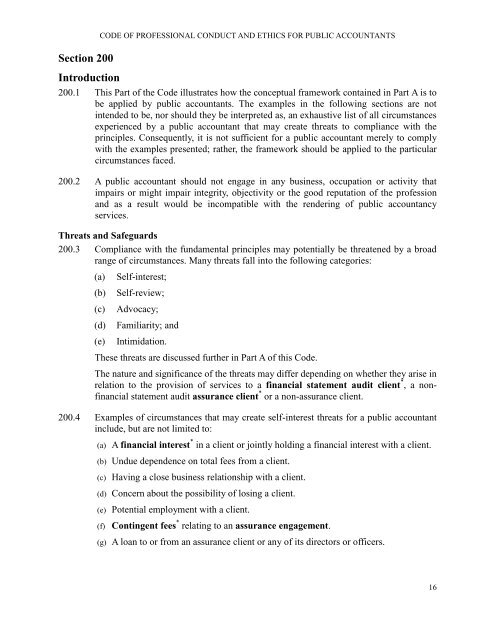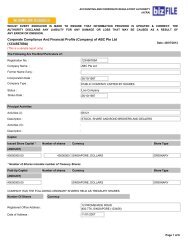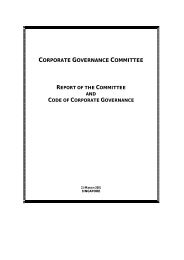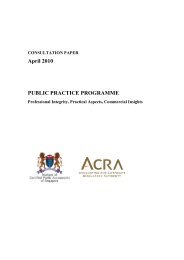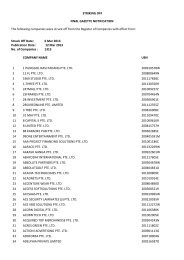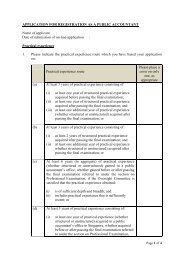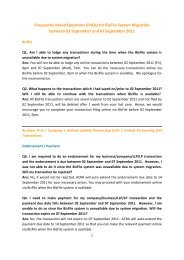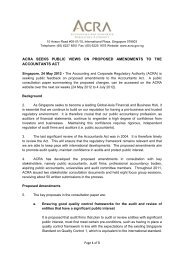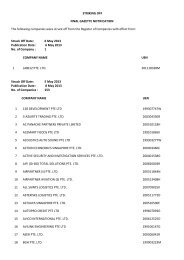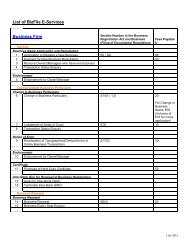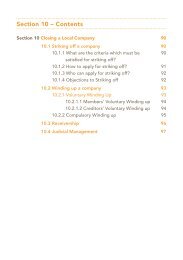Exposure Draft - ACRA
Exposure Draft - ACRA
Exposure Draft - ACRA
You also want an ePaper? Increase the reach of your titles
YUMPU automatically turns print PDFs into web optimized ePapers that Google loves.
Section 200<br />
Introduction<br />
CODE OF PROFESSIONAL CONDUCT AND ETHICS FOR PUBLIC ACCOUNTANTS<br />
200.1 This Part of the Code illustrates how the conceptual framework contained in Part A is to<br />
be applied by public accountants. The examples in the following sections are not<br />
intended to be, nor should they be interpreted as, an exhaustive list of all circumstances<br />
experienced by a public accountant that may create threats to compliance with the<br />
principles. Consequently, it is not sufficient for a public accountant merely to comply<br />
with the examples presented; rather, the framework should be applied to the particular<br />
circumstances faced.<br />
200.2 A public accountant should not engage in any business, occupation or activity that<br />
impairs or might impair integrity, objectivity or the good reputation of the profession<br />
and as a result would be incompatible with the rendering of public accountancy<br />
services.<br />
Threats and Safeguards<br />
200.3 Compliance with the fundamental principles may potentially be threatened by a broad<br />
range of circumstances. Many threats fall into the following categories:<br />
(a)<br />
(b)<br />
(c)<br />
(d)<br />
(e)<br />
Self-interest;<br />
Self-review;<br />
Advocacy;<br />
Familiarity; and<br />
Intimidation.<br />
These threats are discussed further in Part A of this Code.<br />
The nature and significance of the threats may differ depending on whether they arise in<br />
relation to the provision of services to a financial statement audit client * , a nonfinancial<br />
statement audit assurance client * or a non-assurance client.<br />
200.4 Examples of circumstances that may create self-interest threats for a public accountant<br />
include, but are not limited to:<br />
(a) A financial interest * in a client or jointly holding a financial interest with a client.<br />
(b) Undue dependence on total fees from a client.<br />
(c) Having a close business relationship with a client.<br />
(d) Concern about the possibility of losing a client.<br />
(e) Potential employment with a client.<br />
(f) Contingent fees * relating to an assurance engagement.<br />
(g) A loan to or from an assurance client or any of its directors or officers.<br />
16


